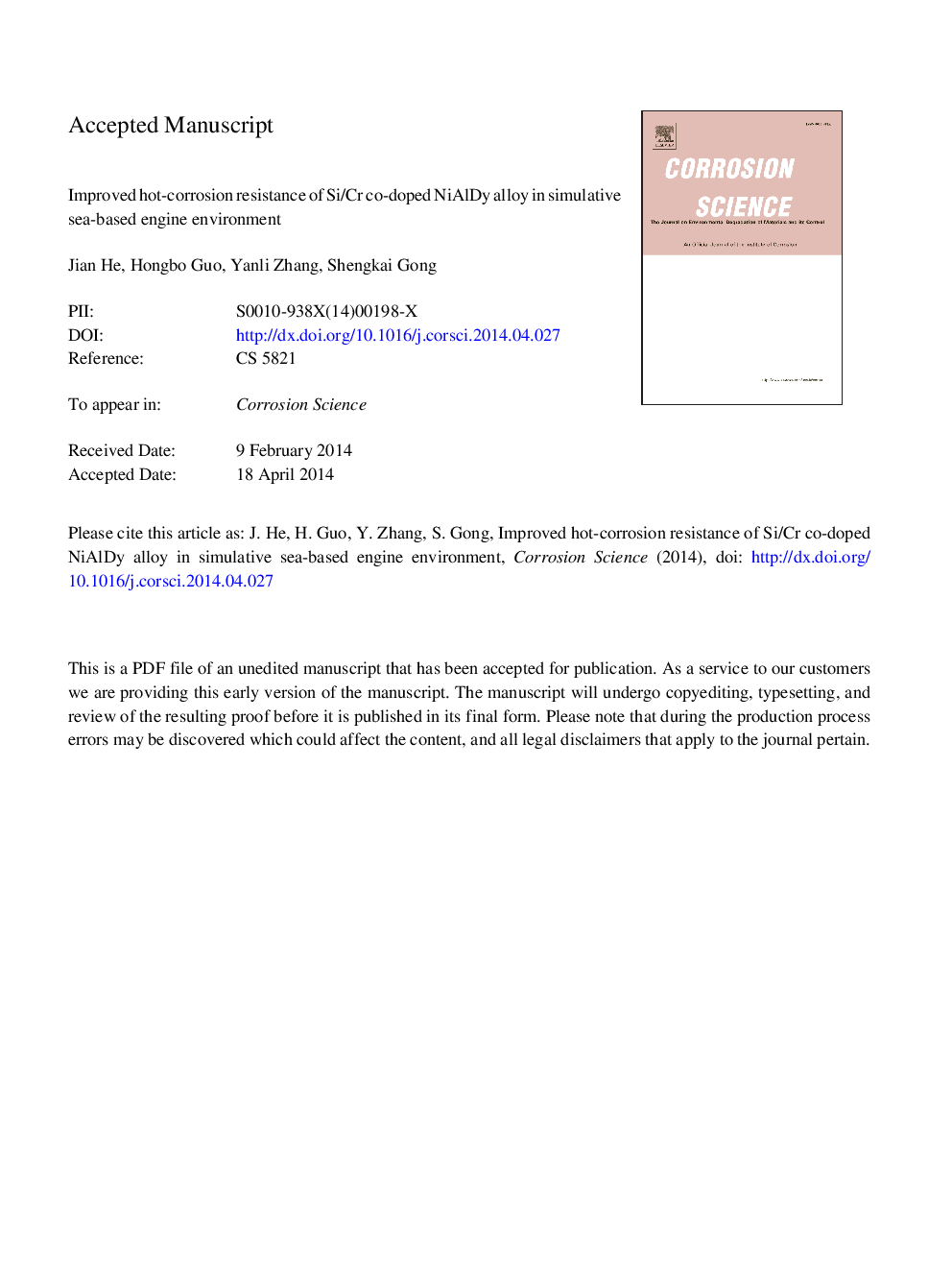| Article ID | Journal | Published Year | Pages | File Type |
|---|---|---|---|---|
| 7895825 | Corrosion Science | 2014 | 31 Pages |
Abstract
Hot-corrosion behaviour of NiAlDy, NiAlDyCr and NiAlDyCrSi alloys was investigated at 950 °C in a simulative sea-based engine environment. Si and Cr would co-segregate at grain boundaries to form some compounds mainly comprising Cr5Si3 for NiAlDyCrSi alloys. After corrosion, compared to the NiAlDy alloy, single doping of Cr was susceptible to the attack caused by large amounts of chlorides in this simulative environment and thus accelerated the scale spallation. While the Si/Cr co-doped NiAlDy alloys exhibited lower oxidation rate and fewer spinels, mainly due to the formation of a thin inert SiO2 film on the scale.
Related Topics
Physical Sciences and Engineering
Materials Science
Ceramics and Composites
Authors
Jian He, Hongbo Guo, Yanli Zhang, Shengkai Gong,
